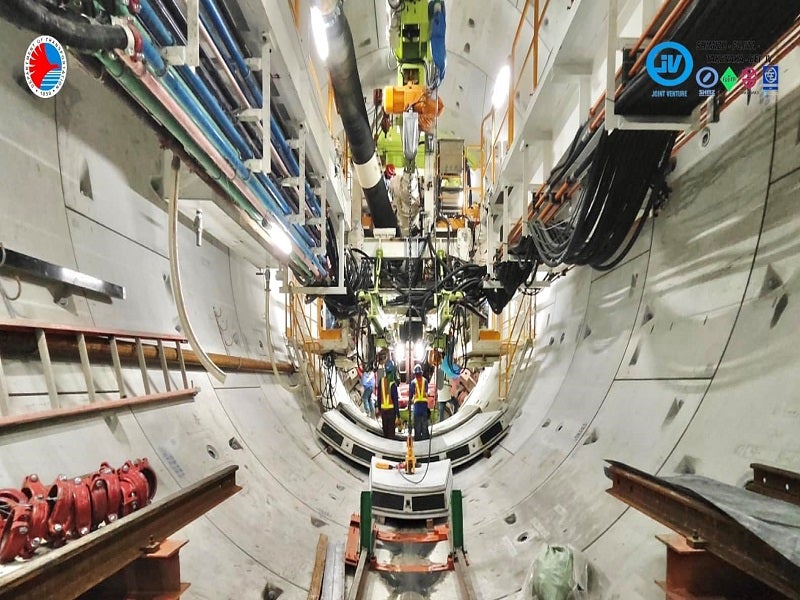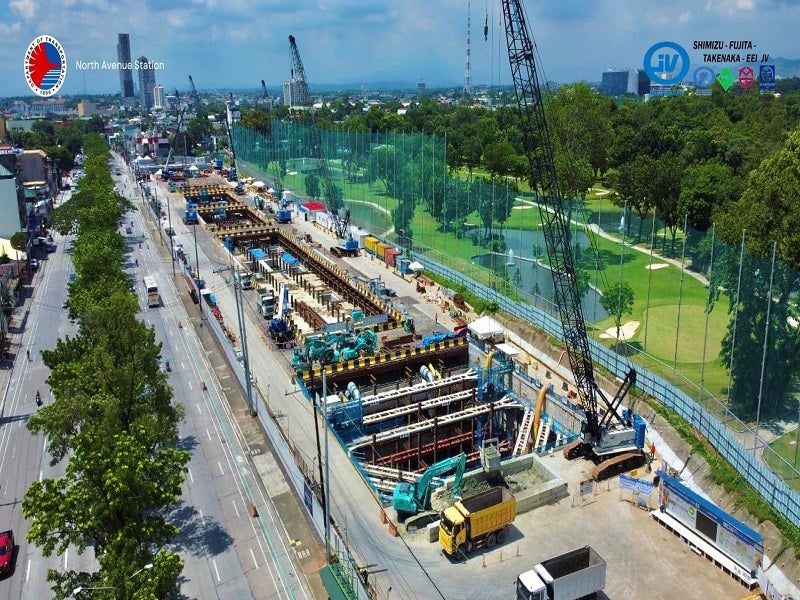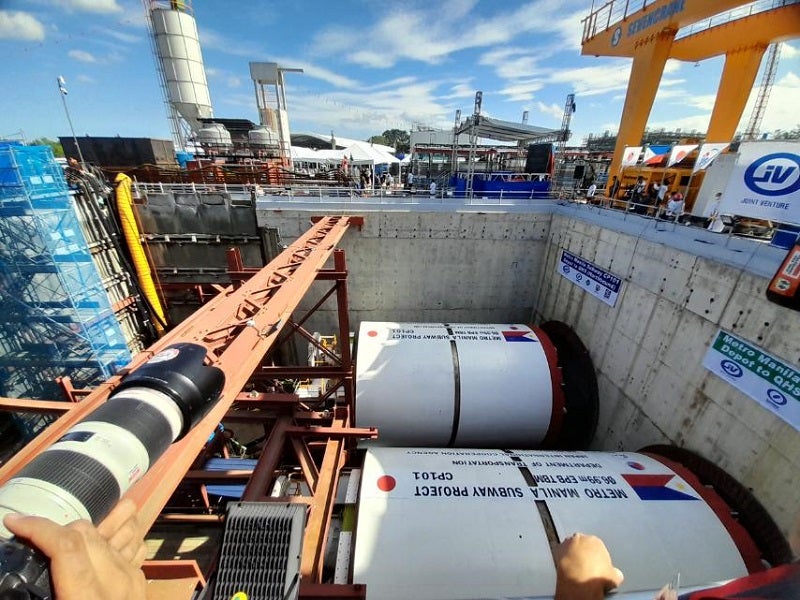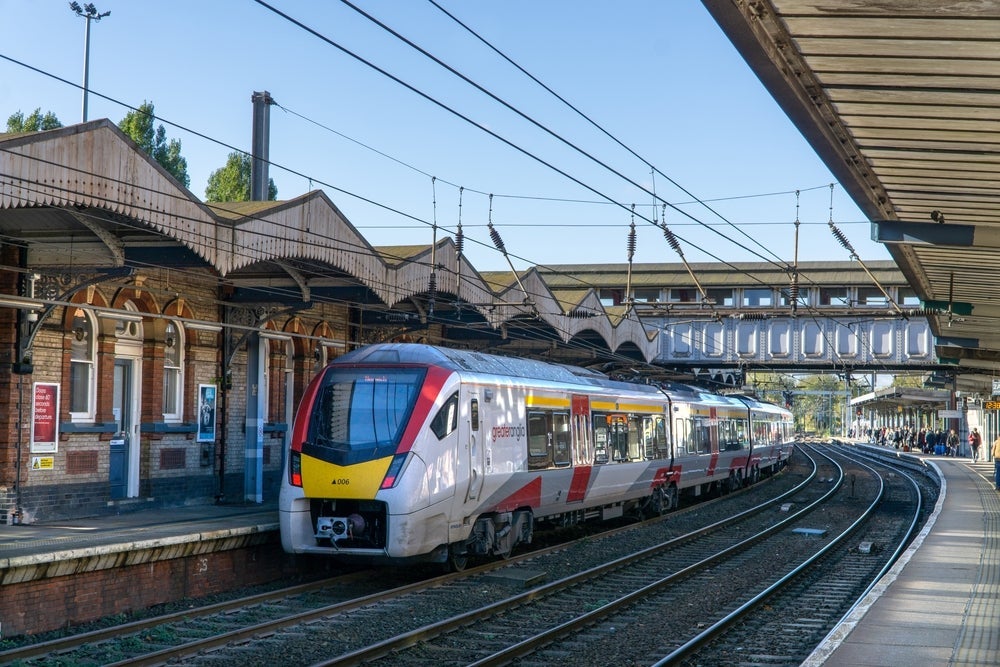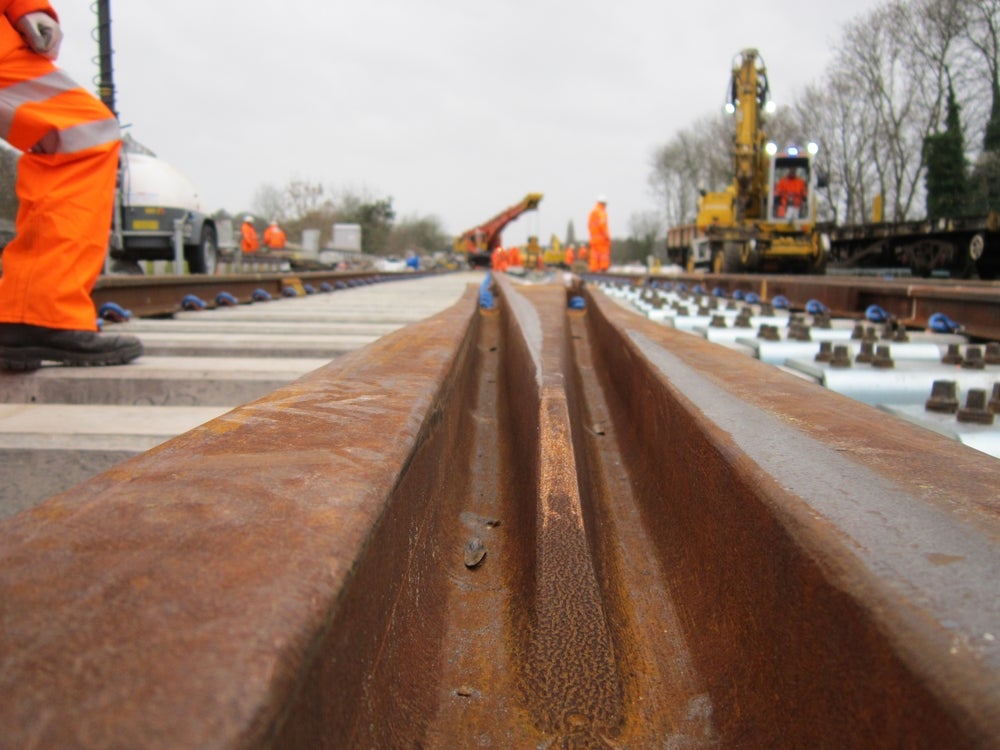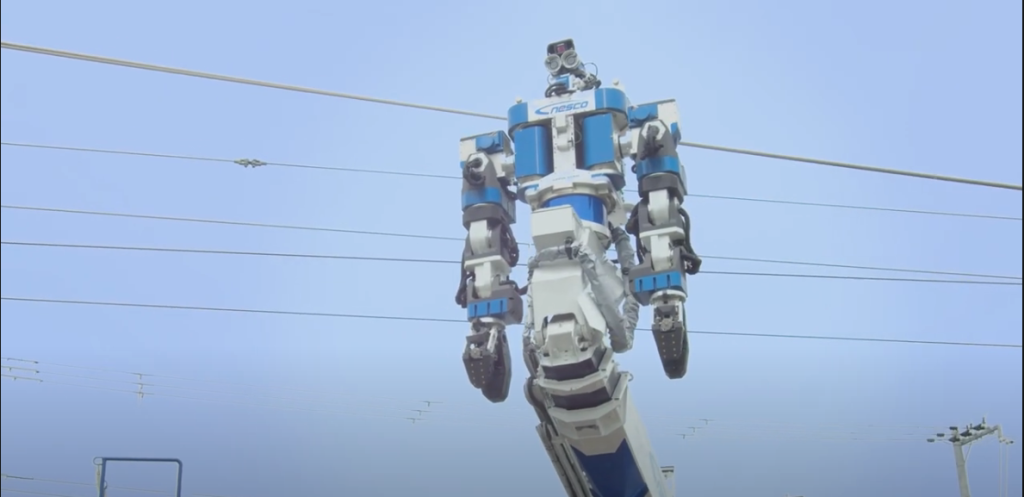Metro Manila Subway is a 33.1km-long subway being constructed in Metro Manila, Philippines, from Valenzuela to the Ninoy Aquino International Airport (NAIA), connecting 17 stations and a depot. It will be the first mass underground transport system in the Philippines.
It has a design capacity to accommodate 1.5 million passengers a day and is expected to serve 400,000 passengers to as many as 800,000 passengers in a day.
The project was proposed by the Department of Transportation (DOTr) and approved by the National Economic Development Authority’s Investment Coordination Committee (NEDA-ICC). The subway is part of the Duterte Administration’s Build, Build, Build programme.
Ground-breaking for the Manila subway project was held in Valenzuela City in February 2019. Phase one is expected to be completed by 2025. The entire Metro Manila Subway project (MMSP) is set to be completed by July 2027.
Metro Manila subway construction details
The project will be implemented in two phases in multiple contract packages (CP). The initial phase will cover the central zone in the North Capital Region between Valenzuela and Paranaque while the second phase will cover the north and south zones.
In December 2020, DOTr partnered with the Department of National Defense – Armed Forces of the Philippines (DND-AFP) to receive a right-of-way for the project. MMSP will use 50,000m² of DND-AFP land, 60,000m² of land for tunnelling works and 55,000m² for temporary works under the deal.
The MMSP contract package (CP) 101 includes the construction of the first 7.3km section of the project from the Depot in Valenzuela to the north Metro Manila, including the depot, three stations and six shield tunnels, which connect the stations.
Tunnel excavation commenced in January 2023. The tunnelling work involves the construction of six underground tunnels with a total length of 9.5km with an inner diameter of 6.1m. The project will use up to six earth pressure balance tunnel boring machines (TBMs).
CP102 encompasses the construction of two stations, Quezon and East Avenues, for the MMSP. Construction of the same commenced in April 2023. CP102 will connect commuters to Quezon City’s central business district, government offices and private institutions.
CP103 of the MMSP includes constructing the Camp Aguinaldo station, which will connect the Anonas and Camp Aguinaldo stations to other stations and NAIA terminals. The pre-construction works for the station commenced in November 2021.
CP104 includes the construction of two subway stations and tunnels at Ortigas North and South. In comparison, CP105 involves tunnel works and the construction of two stations, the Kalayaan in Makati City and Bonifacio Global City (BGC) terminals in Taguig City.
CP106 involves electrical and mechanical systems and track works. CP107 includes designing, supplying, installing, constructing, testing and commissioning 240 train cars or 30 eight-car train sets for MMSP. CP108 includes the construction of the Lawton to Senate tranche and CP109 includes the spur line linking to the NAIA Terminal 3 station.
Metro Manila Subway route details
The Katipunan route was shortlisted among the three proposed routes. The line will run from Quirino Highway station in Quezon City to NAIA Terminal 3 in Pasay and FTI station in Taguig.
The subway will connect Mindanao Avenue in the northern part of Metro Manila to Western Bicutan in the southern part of Metro Manila, where NAIA is situated.
Spanning across Valenzuela (the depot), Quezon, Pasig, Makati, Taguig and a small portion of Paranaque City, the subway system has a maximum operational speed of 80km/h. It will run through seven local governments and three business districts in 30 minutes. Two of the 17 stations will be interoperable with the North-South Commuter Railway line.
Quirino Highway-Mindanao Avenue Station, Tandang Sora Station and North Avenue Station will be the first three stations to begin operations under phase one.
The Manila subway will be connected to major rail lines of PNR Clark, PNR Calamba and the Common Station for better connectivity.
It will also have a spur line extending up to NAIA to offer better connectivity for the passengers.
Philippines Metro Manila subway infrastructure
Metro Manila subway stations are being built using the cut-and-cover method while the non-cut-and-cover tunnelling method will be employed for the excavation between stations.
The Double Tube Single Track (DTST) tunnel structure was preferred for the subway based on the expenditure, construction period, platform width and ventilation requirements.
The project has been granted Special Terms for Economic Partnership (STEP) and is expected to benefit from Japanese technologies and equipment. A Japanese tunnel boring machine with a diameter of 6.9m and a weight of more than 600t will be utilised to construct the subway.
Metro Manila Subway will feature disaster-resilient strategies to tackle the regular occurrence of typhoons and earthquakes. Water-stop panels, doors, high-level entrances for flood prevention, earthquake detection and a train stop system will be installed.
Each subway station will feature a 210m-long platform and an intermodal facility to facilitate transfers to and from a road-based transport system.
Financing for Manila subway
The project requires an investment of 355.6bn pesos ($7bn), which will be financed through a Japan International Cooperation Agency (JICA) Official Development Assistance (ODA) loan, which will have an annual interest of 0.10% payable in 40 years with a grace period of 12 years.
JICA signed an agreement with the Government of the Republic of the Philippines to provide an ODA loan of up to ¥104.53bn ($940m) for phase one of the Manila subway in March 2018.
In February 2022, JICA entered an agreement with the Government of the Republic of the Philippines in Manila to offer a Japanese ODA loan of up to ¥253,307m for the MMSP for Phases one and two.
Contractors involved
The Department of Transportation (DOTr) signed a contract with a joint venture (JV) of Shimizu, Fujita, Takenaka Civil Engineering and EEI, a construction company.
The joint venture is responsible for designing and constructing three underground stations, tunnel structures and the Valenzuela Depot, as well as infrastructure for the Philippine Railway Institute.
Tokyu-Tobishima Megawide Joint Venture (TTM-JV) is constructing the first phase of the Metro Manila Subway.
Works under the CP101 is being carried out by a JV led by Shimizu. A JV between Nishimatsu Construction and D. M. Consunji is carrying out works under the CP102 package of the MMSP.
CP104 works are being carried out by Tokyu-Tobishima Megawide Joint Venture (TTM-JV). Japan Transport Engineering (JTREC) and Sumitomo JV are providing 240 subway train cars under CP107.
Mitsubishi is designing, manufacturing, installing and delivering all the systems for the MMSP.
In a consortium with Colas Rail (lead) and Egis, Thales was contracted by Mitsubishi to provide design and build services for the MMSP. The contract was valued at €1bn ($1.1bn).
Thales is providing integrated communications and supervision systems and the automatic fare collection system for a total of €156m ($174.8m).
JIM Technology (JIMT), a Japanese firm, was contracted to manufacture the six TBMs for the project.
Benefits
The new MMSP is expected to reduce travel time from Quezon City to NAIA from one hour and 10 minutes to just 35 minutes.
The project will help relieve traffic congestion in Metro Manila and serve one million passengers daily upon completion.

